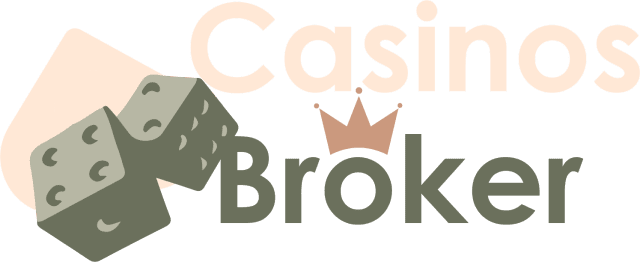The online gambling sector continues its remarkable expansion trajectory, with industry leaders and emerging operators vying for market dominance in an increasingly crowded landscape. The iGaming market is on a significant upward trajectory, with revenue projected to hit $107.6 billion in 2025, while mergers and acquisitions have been a significant trend in business development for several years and will continue to be in 2025. According to Mordor Intelligence, the online gambling market was valued at $103 billion in 2024 and is projected to reach $169 billion by 2029, representing a compound annual growth rate exceeding 10%. In this dynamic environment, comprehensive competitor analysis has evolved from a strategic advantage to an operational necessity for sustained market presence.
The Strategic Imperative of Competitor Analysis
Website traffic represents the lifeblood of any digital gambling operation, quantifying unique user engagement across specified timeframes and serving as the primary determinant of commercial success. Analyzing competitor traffic patterns extends far beyond satisfying curiosity; it constitutes a fundamental strategic exercise that enables operators to assess market positioning relative to industry peers.
This analytical approach provides invaluable insights into industry trends and market dynamics. When new operators enter your market segment while your traffic declines, this signals potential deficiencies in your SEO strategy or market positioning. Furthermore, competitor analysis facilitates the identification of optimal advertising platforms by evaluating audience alignment and engagement patterns.
Core Business Objectives Addressed
Systematic competitor analysis forms the foundation for developing and refining SEO and marketing strategies. This process enables market trend monitoring, identification of effective traffic acquisition channels, and recognition of improvement opportunities. The analysis proves essential for evaluating new advertising channels and conducting due diligence on potential competitors before strategic partnerships or acquisitions.
Key Performance Indicators for Analysis
| Metric Category | Primary Indicators | Strategic Significance |
|---|---|---|
| Traffic Volume | Total visits, unique users, sessions | Market scale assessment and audience stability evaluation |
| Traffic Sources | Organic, direct, paid, social, referral | Channel effectiveness and strategy insights |
| User Engagement | Bounce rate, session duration, pages per session | Content quality and user experience optimization |
| Audience Behavior | New vs. returning users, geographical distribution | Loyalty measurement and market penetration analysis |
| Technical Performance | Page load speed, mobile responsiveness, Core Web Vitals | Competitive advantage through superior user experience |
When analyzing competitor gambling sites, professionals must evaluate comprehensive strategies employed to attract and retain visitors alongside raw traffic figures. Traffic volume assessment reveals both overall scale and audience stability, providing insights into competitive positioning. Traffic source analysis uncovers the various pathways users employ to reach websites, including search engines, direct navigation, social networks, paid advertisements, and partner sites.
Bounce rate analysis indicates user experience quality, with high bounce rates potentially signaling suboptimal website design or content misalignment with user expectations. The ratio of new to returning users serves as a critical engagement metric, with substantial returning user populations indicating strong audience retention capabilities.
Comprehensive Competitor Identification Strategy
Direct and Indirect Competition Mapping
Given the significant potential for audience overlap, thorough analysis must encompass both direct and indirect competitors. This comprehensive approach identifies successful content strategies and traffic acquisition methods that inform robust strategic development.
For online casino operators, direct competitors include other licensed gambling platforms operating in similar jurisdictions. However, indirect competitors warrant equal attention, encompassing informational review sites, affiliate marketing programs, streaming personalities, and specialized gaming blogs that capture overlapping audience segments.
Advanced Competitor Discovery Techniques
The initial approach involves adopting typical user behavior patterns. Conducting searches using primary keywords such as “casino online,” “no deposit bonuses,” and “best slots” across major search engines reveals consistently high-ranking competitors, particularly those prominent in advertising blocks.
For sophisticated analysis, specialized services including SimilarWeb, Ahrefs, Serpstat, and Semrush provide automated competitor identification. These platforms generate comprehensive competing domain lists while enabling immediate evaluation of key metrics including traffic volume, search engine positions, semantic coverage, and advertising channel utilization.
In-Depth Traffic and Audience Analysis
Volume Assessment and Context
Understanding the context surrounding absolute traffic numbers proves crucial for accurate evaluation. While traffic levels may appear substantial, significant portions of these visitors may not convert to paying customers. Successful analysis requires deep understanding of traffic sources, geographical distribution, and on-site behavioral patterns.
Traffic volume serves as a primary metric for assessing competitor scale and market credibility. Significant traffic increases or decreases provide valuable insights into competitor strategies, such as successful advertising campaign launches or search engine penalty impacts. Consistently high, stable traffic typically indicates robust market positioning and well-executed long-term strategic planning.
Traffic Source Diversification Analysis
Understanding which channels drive the majority of competitor website visitors reveals strategic priorities and market approach effectiveness. Organic traffic from search engines like Google and Yandex demonstrates strong SEO optimization and content marketing success. Direct traffic indicates brand strength and audience loyalty, with users actively seeking the site through URL entry or bookmarking.
Promotional traffic from contextual or targeted advertisements reveals paid marketing investments and campaign effectiveness. Social media traffic from platforms such as VKontakte, Telegram, and Twitter indicates community engagement strategies. Referral traffic through affiliate channels demonstrates partnership program success, while media traffic from banners and video advertising showcases brand marketing initiatives.
Geographic and Device Analytics
Traffic geography analysis identifies target markets and regional focus areas, particularly relevant in iGaming where regulations and player preferences vary significantly between jurisdictions. Solutions effective in Asian markets may prove ineffective or counterproductive in European contexts.
Device usage patterns provide behavioral insights that inform strategic decisions. When competitors receive 90% mobile traffic compared to your 50% mobile audience, blindly copying their approach would prove counterproductive. Adapting user interface and experience design to match your specific audience ensures steady traffic growth and improved engagement metrics.
Advanced SEO Strategy Analysis
Fundamental Site Characteristics
After identifying competitors and traffic sources, conducting comprehensive SEO strategy analysis becomes essential. Successful search engine optimization encompasses visual design, content quality, site architecture, navigation efficiency, and technical implementation. Beyond keywords and content, SEO requires robust link profiles and flawless technical execution.
Site type comparison ensures relevant benchmarking, as dissimilar site comparisons provide limited actionable insights. Domain zone analysis reveals competitive aggressiveness within specific niches. Site age assessment identifies established players who may possess search engine authority advantages through longevity and accumulated trust signals.
Growth trend evaluation reveals rapidly expanding competitors who provide valuable insights into successful traffic acquisition strategies. This baseline screening eliminates irrelevant competitors, enabling focus on the most strategic examples for detailed analysis.
 Semantic and Keyword Strategy
Semantic and Keyword Strategy
This analysis stage assesses competitor traffic generation and identifies ranking queries alongside pages generating substantial organic traffic. Utilizing tools like Serpstat, Ahrefs, or Semrush to identify competitor top keywords provides strategic insights for content development and SEO planning.
Traffic page analysis reveals which sections and pages receive promotion for specific query clusters. Semantic gap identification uncovers popular queries competitors neglect, representing rapid growth opportunities for strategic content development. Keyword specification analysis examines frequency, commercial versus informational focus, and current traffic generation potential.
Link Profile Architecture
External links to competitor websites drive traffic and increase online visibility, with link quantity demonstrating positive correlation with search engine ranking positions. However, quality supersedes quantity, with authoritative site links carrying significantly more weight than numerous low-quality connections.
Link analysis can dramatically impact site success, particularly regarding search engine sanctions or restrictions. External links remain significant ranking factors, and analyzing competitor link profiles reveals external SEO optimization extent and strategy sophistication.
Comprehensive link analysis examines referring domain quantities, anchor text utilization patterns, link acquisition dynamics over time, link types and sources, and donor site quality assessment. Understanding organic versus synthetic link strategies provides insights into competitor investment levels and long-term sustainability approaches.
Content and Site Structure Evaluation
High-Traffic Page Identification
Assessing individual page structures within competitor sites reveals traffic generation elements and successful implementation strategies. Rather than attempting to replicate entire site structures, analytical services like Ahrefs Top Pages identify the crucial 20% of pages generating 80% of traffic, enabling focused enhancement efforts.
Navigation and Information Architecture
Website structure critically impacts both SEO performance and user experience. Information must be presented logically, clearly, and accessibly, with important pages reachable within three to four clicks from the homepage. Analyzing competitor structures helps avoid common mistakes while developing efficient, user-friendly page hierarchies.
Design and Content Strategy
Website design and branding create crucial first impressions, determining whether sites appear premium or questionable. Corporate identity evaluation encompasses font readability, color scheme vibrancy, and overall visual cohesion. Strong, recognizable brand design establishes credibility and competitive differentiation.
Banner, promotion, and call-to-action analysis reveals user guidance effectiveness toward targeted actions like registration or deposits. Visual content evaluation determines whether competitors utilize unique, high-quality materials versus standard stock imagery. Attractive visual content enhances page appeal while contributing to SEO success through image optimization and appropriate attribute usage.
Structured content elements including tables, lists, headings, and formatting enhance clarity and user-friendliness, positively impacting key performance indicators like site duration and bounce rates. Multimedia integration through images, videos, and interactive content improves appeal and comprehension while supporting SEO objectives.
Professional Analysis Tools and Implementation
Comparative Tool Analysis
SEO professionals utilize various tools with similar core functionalities and minor differences based on specialist preferences and project requirements. SimilarWeb excels at comprehensive traffic analysis, source identification, behavioral assessment, and geographical insights, though it may not capture smaller sites with limited traffic. SEMrush provides powerful semantic and PPC capabilities but can overwhelm users with excessive data presentation.
Ahrefs offers superior backlink analysis and content gap identification but provides limited traffic data compared to specialized traffic analysis tools. Serpstat delivers solid all-in-one functionality at competitive pricing, though with less comprehensive data than premium alternatives. Screaming Frog enables deep technical audits and structure visualization but requires SEO expertise and configuration knowledge.
Tool Selection Strategy
Comprehensive analysis rarely requires all available tools. Selecting one or two fundamental platforms and supplementing as necessary often proves sufficient. At CasinosBroker, we typically employ Ahrefs and Screaming Frog combinations for optimal results.
Strategic tool selection follows specific use cases: SimilarWeb for competitor traffic and source analysis, Ahrefs, SEMrush, or Serpstat for keyword and position research, Screaming Frog for technical site audits, Ahrefs Top Pages reports for high-traffic page identification, and SEMrush Domain Overview reports for quick visibility analysis.
Common Analysis Pitfalls and Prevention
Strategic Replication Errors
Gambling operates in highly competitive environments where blindly copying competitor strategies often backfires. Successful strategies for one brand may prove ineffective for another, particularly when targeting different audiences or operating with different resource constraints. Competitors may deliberately mislead through false signals designed to misdirect analysis efforts.
Geographic and Demographic Oversights
Traffic volume varies significantly based on geographical location and device usage patterns. Strategies succeeding in emerging markets may fail in established regions, while mobile-focused approaches may not translate to desktop-dominant audiences. Content, structure, and styling requirements differ substantially between traffic sources, making source-specific optimization essential.
Language and currency considerations represent common scaling mistakes that can undermine otherwise sound strategies. Cultural adaptation requirements extend beyond translation to encompass visual elements, promotional approaches, and user experience design philosophies that resonate with specific demographic segments.
Content Analysis Deficiencies
Effective content analysis requires understanding not only what works but why specific approaches succeed, enabling successful replication and adaptation. Keyword usage patterns, frequency optimization, and contextual presentation require careful evaluation alongside internal and external link strategies.
Attention to user engagement elements including lists, tables, images, infographics, and videos reveals audience capture techniques that can inform content development strategies. Comprehensive content analysis enables creation of superior content that surpasses competitive offerings through strategic enhancement and optimization.
 Pros and Cons of Competitor Analysis
Pros and Cons of Competitor Analysis
Advantages
- Strategic Intelligence Gathering: Competitor analysis provides comprehensive market intelligence that informs strategic decision-making and reduces market entry risks. Understanding successful strategies enables faster market penetration and resource optimization.
- Cost-Effective Market Research: Analyzing competitor approaches provides valuable insights without extensive primary research costs. This approach leverages existing market data and proven strategies to guide development efforts.
- SEO and Marketing Optimization: Identifying successful keyword strategies, content approaches, and link building techniques accelerates SEO performance improvements. Marketing channel effectiveness analysis reveals optimal budget allocation strategies.
- Risk Mitigation: Understanding competitor strengths and weaknesses enables strategic positioning that avoids direct confrontation while exploiting market gaps and opportunities.
- Performance Benchmarking: Establishing performance baselines through competitor metrics enables realistic goal setting and progress measurement against industry standards.
Disadvantages
- Data Accuracy Limitations: Third-party analytics tools provide estimates rather than precise data, potentially leading to strategic decisions based on incomplete or inaccurate information.
- Strategic Myopia: Excessive focus on competitor activities can limit innovation and creative strategic development. Following rather than leading market trends may result in perpetual secondary positioning.
- Resource Intensiveness: Comprehensive competitor analysis requires significant time and tool investments that may divert resources from core business development activities.
- Rapid Market Evolution: Online gambling markets evolve quickly, making analysis results potentially outdated before implementation. Continuous monitoring requirements increase operational overhead.
- Legal and Ethical Considerations: Certain analysis techniques may raise legal or ethical concerns, particularly when accessing proprietary information or engaging in potentially deceptive research practices.
Strategic Implementation Framework
SEO Strategy Development
Comprehensive analysis should generate sufficient material for specific action plan development. Identifying keyword coverage gaps enables content creation for uncovered queries that competitors neglect. Link profile analysis informs more effective reference strategy development, while technical audits improve site speed and reliability, directly impacting search rankings.
Content and Structure Optimization
Analysis facilitates product optimization through market leader site studies that simplify user navigation paths. Understanding audience-preferred content formats enables more engaging content creation that surpasses competitive offerings. Adapting optimal user experience and interface solutions increases conversion rates and player loyalty while maintaining brand differentiation.
Frequently Asked Questions
How frequently should competitor analysis be conducted?
Competitive analysis represents an ongoing process rather than a one-time project. Comprehensive quarterly reviews of website traffic combined with monthly monitoring of three to five major competitors provide optimal strategic intelligence while maintaining operational efficiency.
What constitutes the most critical metrics for analysis?
Traffic volume, source diversity, user engagement indicators (bounce rate, session duration), and conversion pathway effectiveness represent the most critical metrics. Technical performance indicators including page load speed and mobile responsiveness increasingly impact competitive positioning.
How can small operators compete with established market leaders?
Small operators should focus on niche market segments, superior user experience delivery, and agile strategic adaptation. Identifying underserved audience segments and providing exceptional service quality can overcome resource disadvantages through targeted excellence.
What legal considerations apply to competitor analysis?
Ensure all analysis activities comply with data protection regulations and terms of service agreements. Utilize only publicly available information and approved analytical tools. Avoid attempts to access proprietary or restricted competitor data through unauthorized means.
How do regulatory changes impact competitive analysis?
Regulatory modifications can dramatically alter competitive landscapes, making historical analysis less relevant. Monitor regulatory developments in target markets and adjust analysis frameworks to account for compliance requirements and operational restrictions.
What role does mobile optimization play in competitive positioning?
Mobile optimization increasingly determines competitive success, with mobile traffic representing the majority of user engagement in many markets. Prioritize mobile user experience analysis and ensure your platform delivers superior mobile performance compared to competitors.
How should startups approach competitor analysis with limited resources?
Focus on direct competitors within your specific niche rather than attempting comprehensive market analysis. Utilize free or low-cost analytical tools initially, prioritizing SEMrush or Ahrefs free tier offerings. Concentrate on high-impact, low-resource improvements identified through basic competitive intelligence.
What indicators suggest a competitor analysis strategy needs revision?
Declining market share despite implementing competitor-derived strategies, consistent underperformance relative to benchmarks, or significant market changes that alter competitive dynamics indicate strategy revision needs. Regular performance measurement against competitor metrics reveals effectiveness gaps requiring strategic adjustment.
Conclusion
Competitor analysis must generate actionable insights that enhance project performance and market positioning. By identifying market leader strengths and weaknesses, operators can develop comprehensive strategies that achieve sustainable competitive advantages in the dynamic iGaming landscape.
Through strategic partnerships or acquisitions, operators can enter new markets, acquire new technologies or expand product portfolios, making thorough competitor analysis essential for identifying optimal M&A targets and strategic opportunities. Success in this rapidly evolving industry requires continuous market intelligence gathering, strategic adaptation, and implementation of insights derived from comprehensive competitive analysis.
The investment in systematic competitor analysis pays dividends through improved strategic positioning, enhanced operational efficiency, and superior market performance. Organizations that embrace data-driven competitive intelligence while maintaining innovative strategic thinking will achieve sustained success in the competitive online gambling marketplace.





